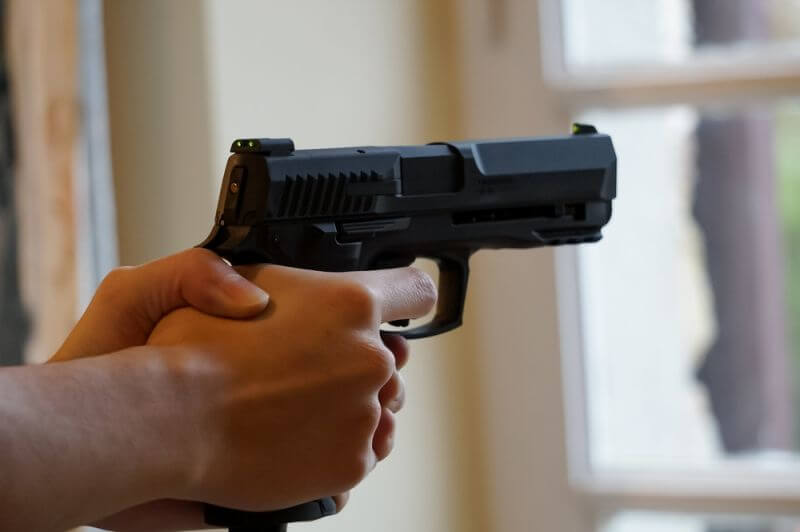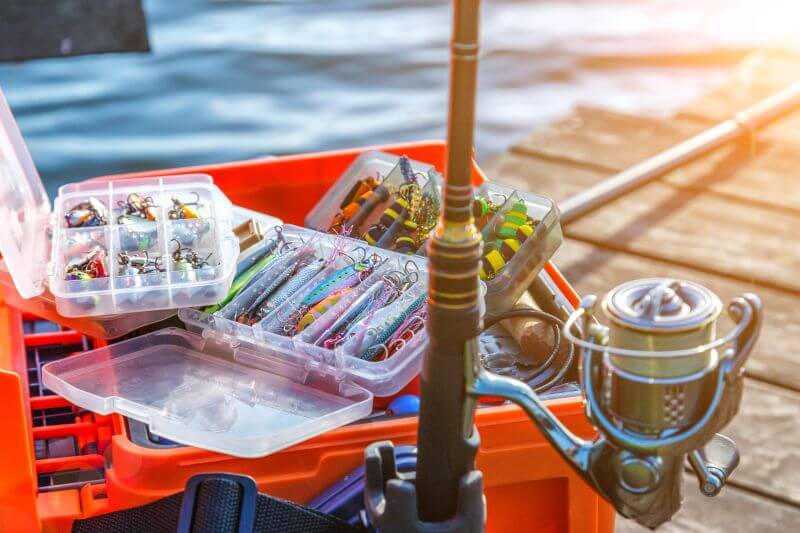If you’re an outdoor aficionado, you’re probably checking constantly for survival tips and tricks and, as you may already know, paracord is one of those special items you should have on your person when SHTF. In other words, always have it within reach.
When it comes to survival gear, there are 4 basic things you should be capable of doing with it: shelter-building, filtering water, gathering food, and starting a fire. In an ideal world, your survival kit must be able to resolve all these issues without problems.
If you’re able to achieve this goal, you’ll be able to survive for a few days until help arrives, or possibly even indefinitely, in case the cavalry is busy somewhere else. You know what I am talking about – if you can procure water, food, shelter, and make a fire in a survival situation, you’re pretty much guaranteed for winning the prepper academy award.
This brings us to today’s topic, how to DIY a paracord survival grenade. Truth be told, a well-made (as in smart) paracord survival grenade can be described as the mother of all survival gear.
That’s because a properly made paracord grenade will provide you with all the basics of survival, i.e. you’ll be able to hunt and fish, start a fire, build yourself a shelter and, why not, even boil water.
The devil is in the details. That’s an old saying which is truer than ever when it comes to paracord survival grenades.
The thing is, you can buy a pre-made one. In case you’re wondering why, well, paracord survival grenades have already achieved legendary status among the prepper community, which is growing exponentially year after year. Because of that, this pre-made item sells quite well indeed.
13 Essential survival items are included inside this Paracord Survival Kit. Grab this offer now!
In a nutshell (pun intended), a paracord survival grenade has a core which contains essential survival items, all wrapped with paracord, which in itself is another crucial survival piece of gear, ending up in a nicely-wrapped, portable, space-saving packet of survival goodies.
Now, talking about commercially available items, some of them are wrapped together using a cobra knot with the paracord. This style knot makes the grenade look great, but looks won’t help you survive if it’s not functional.
The problem with the cobra knot is that despite its cool appearance, when the rubber hits the road and you need to use it, it is pretty hard to deploy. It’s not as quick as you may need it to be at the critical moment when your life depends on it.
Now, the problem with using other types of knots is that you may end up with an ugly looking paracord grenade, but in my book, usability trumps beauty, so fair warning.
As per future reference, I would suggest DYI-ing your paracord grenade using the quick-deploy type of the cobra knot, which is the solomon bar.
This type of knot requires some practice and patience, but it’s fairly easy to do after you get the hang of it, and it’s lightning fast to deploy if so desired. Here is an example, take a piece of paracord and start practicing.
Video first seen on TyingItAllTogether.
Moving along with our story, nowadays almost everyone has heard about paracord bracelets, which actually became more like fashion pieces rather than survival items for the urban prepper. A survival paracord grenade has more than just plain rope, but what’s inside is what matters the most. It’s here that you must pay extra attention.
A basic survival paracord grenade holds about twenty feet of paracord. Ideally, you should go for mil-spec paracord, but any type of high-quality paracord, rated to at least 500 pounds, will do the job if you’re stranded in the middle of nowhere, in the wilderness and all that jazz.
Obviously, you can create a bigger or a smaller one, depending on your needs and personal preference, but as a general rule of thumb, 20 feet, or roughly 6 meters, of paracord are marking the sweet spot, dimensions-wise. The idea is to strike the perfect balance (as in portability/convenience) with your survival grenade, else you can choose to carry some rope and a bunch of survival tools in a bag if you’d rather.
As I already told you, one of the key issues with DIY paracord grenades is to be able to take them apart easily. For example, consider that you’re out there in the cold (it’s winter after all) and your hands are frozen stiff. Struggling to untie the knots of your paracord grenade for deploying your survival gear in order to make a fire is not the best idea in a survival situation, right?
Video first seen on MOD.
5 Essential Steps to DIY the Perfect Paracord Survival Grenade
So, if you want to build the perfect paracord grenade, you must follow a few simple steps, together with knowing perfectly well what survival tools to include inside.
1. Built it around a carabiner
A paracord survival grenade is built around a carabiner. That’s what makes it look like an actual grenade. Aesthetics aside, a carabiner is a staple item in any respectable survival kit.
2. Put some fishing and trapping gear inside
Next, considering that one must eat in order to live to fight another day, you must put some fishing and trapping gear inside your survival grenade. Items such as snare wire, small game trapping items and a small fishing kit would be perfect.
3. Add a small LED flashlight
A small LED flashlight would come handy when in need, i.e. starting a fire is not possible and you can’t find your way in the darkness. After all, the sun has a tendency to disappear for hours, especially during the winter, and if you’re afraid of the dark … I’m kidding of course, but an LED flashlight is an excellent item to have in your survival kit in any situation.
4. Include a small blade and a Ferro rod
Another item to consider is a small blade and a Ferro rod, as an additional fire-starter item. Ideally, one should carry a survival knife at all times, but having a backup is always smart, hence the small blade recommendation.
These are the bare minimum survival items to consider, but use your imagination and don’t be afraid to improvise (a small lighter or match sticks, striking sheet, etc).
5. Wrap the survival items in tin foil
Last but not least, once you have decided what to put inside the core of your survival paracord grenade, don’t forget to wrap ’em all up using a tin foil. Besides keeping your survival gear inside dry, the tin foil sheet can be used as a water container and you also can boil the water in it, thus destroying the bacteria.
Remember – all items must directly contribute to base survival in one way or another.
Video first seen on LittleMtnOutdoors.
This particular paracord grenade hides essential survival tools inside:
- 6 feet of fishing line
- a razor blade
- 2 small hooks
- 2 split shot sinkers
- a small strip of sandpaper
- 6 strike-anywhere matches,
- 2 band aids
- 1 foot of jute twine for tinder and aluminum foil
- the paracord itself.
Click the banner below to grab your Paracord Survival Kit!
This article has been written by Chris Black for Survivopedia.










Ben Leucking | January 17, 2017
|
Seriously, every self-respecting Get-Home Bag and Bug-Out Bag should already have these components incorporated. Why would I wrap a flashlight inside 20 feet of paracord, only to find that the batteries (which I could not get to without unravelling the cord) have died when I need them in an emergency? And how did you arrive at 20 feet as the magic number for paracord? I carry 300 feet in my vehicle and a minimum of 50 feet in my GHBs and BOBs.
william halford | January 17, 2017
|
I agree. Even a decent sized fanny pack can carry all of that and more, while not being too big or heavy. And this includes more than 20 feet of paracord.
I often have my 3 zipper pocket fanny pack, and rather than just a flashlight, I have a Coghlan’s power supply with LED light. It can be charged via Micro USB, hand crank, and solar cell. It has a USB port for charging cell phones, etc. I carry it and a USB to Micro USB cord in my fanny pack.
I also have a very small Monkees hand crank/solar charged light that isn’t much larger than the diameter of a silver dollar as backup.
Both of these eliminate the need for batteries, and the Coghlan’s power supply can charge other things as well.
I carry 30 feet of paracord, an emergency rain poncho made out of the same material as a space blanket, and an emergency two person bivvy shelter made out of the same material. As well as a medium sized folding knife. And a half liter bottle of water, along with a loaded S&W Model 60 and two speed loaders. Plus an ACE bandage in case of a sprain, which could also double as a bandage to stop or slow bleeding. A cigarette light fits too.
I use this fanny mack as my hiking partner. I can change out the contents with other items as needed.
However, the fanny pack with the above listed items is as full as it can get. I am looking for one a little bigger that can also fit a water filter and something to start a fire with without having to get rid of the above listed items.
As it is, I have carried the fanny pack with the items listed above and a small day pack with other items in it (such as food, tinder, first aid kit, warm gloves, etc), so that would suffice in most situations.
Christopher | January 18, 2017
|
I’m actually a ‘fan’ of this sort of concept, but, there are items you should NEVER put inside a package like this. Anything you need immediate access to, such as your knife, or items which require batteries or might go bad over time, should not go in there. What I like about it most is you can put inside a shopping list of small objects you can use in an emergency, when all your important stuff that you have on you is lost, or gone. But, that said, I see no big benefit to putting it inside a paracord ‘grenade’, over an Altoids tin, or some other container you can get quicker access to it, and still wrap cordage around that. It’s an option, yes, but not the only one.
william halford | January 18, 2017
|
That makes sense. That’s one reason I like the fanny pack idea, no matter how geeky it might look.
Christopher | January 18, 2017
|
I have a shoulder bag that is not much bigger than fanny pack size. In fact, it’s got a velcro ‘sleeve’ in the back allowing me to wear it as one. I keep my survival basics in there. I like options. One thing I like about the grenade idea, you can make one fairly small, tuck in a few useful items, forget it’s there, and use it as a zipper pull or keychain fob. Need emergency tools? You got them.
Pingback:How To Make A 5 Gallon Bucket Survival Kit | Survivopedia | October 31, 2017
|